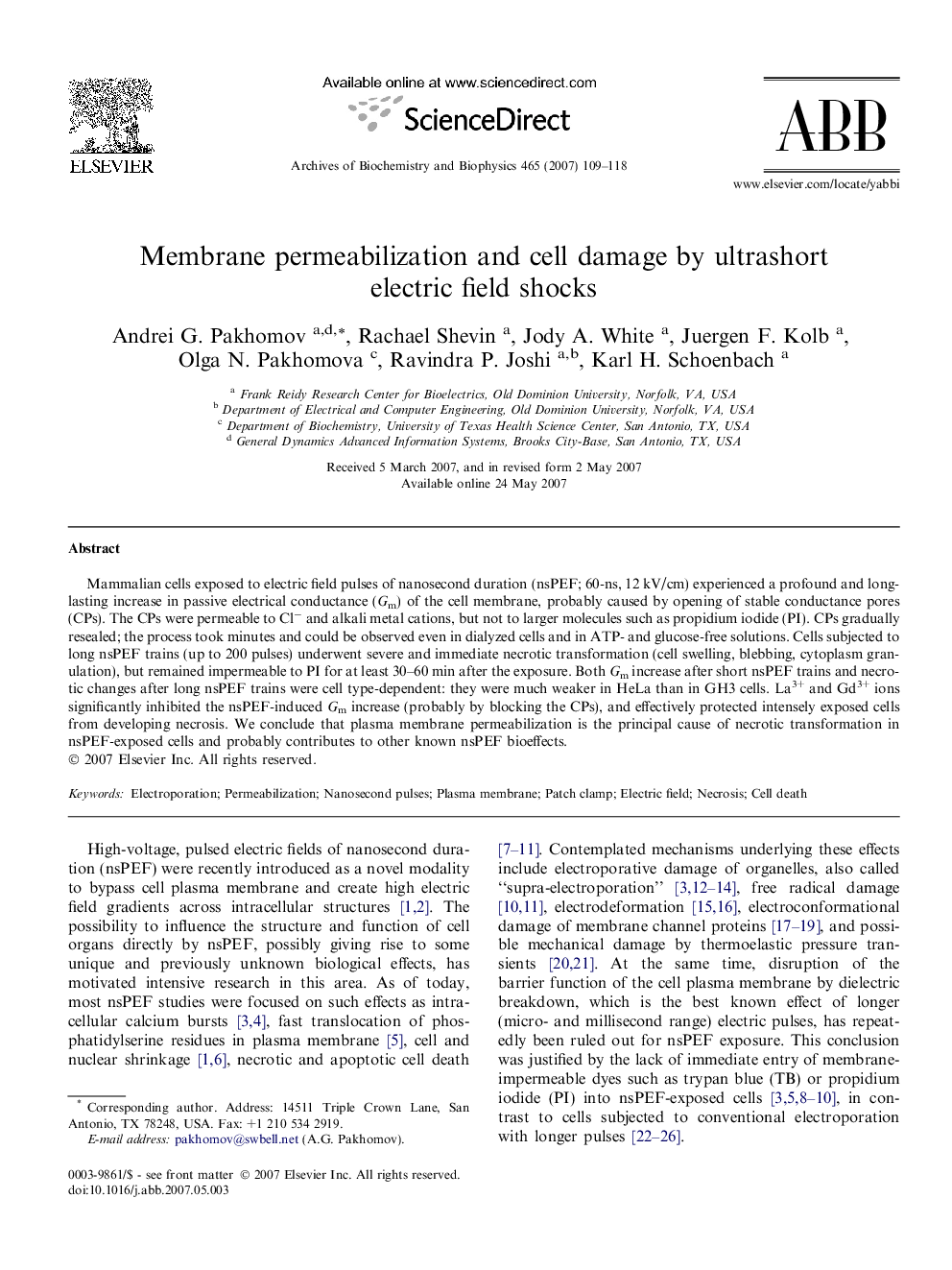| Article ID | Journal | Published Year | Pages | File Type |
|---|---|---|---|---|
| 1927046 | Archives of Biochemistry and Biophysics | 2007 | 10 Pages |
Mammalian cells exposed to electric field pulses of nanosecond duration (nsPEF; 60-ns, 12 kV/cm) experienced a profound and long-lasting increase in passive electrical conductance (Gm) of the cell membrane, probably caused by opening of stable conductance pores (CPs). The CPs were permeable to Cl− and alkali metal cations, but not to larger molecules such as propidium iodide (PI). CPs gradually resealed; the process took minutes and could be observed even in dialyzed cells and in ATP- and glucose-free solutions. Cells subjected to long nsPEF trains (up to 200 pulses) underwent severe and immediate necrotic transformation (cell swelling, blebbing, cytoplasm granulation), but remained impermeable to PI for at least 30–60 min after the exposure. Both Gm increase after short nsPEF trains and necrotic changes after long nsPEF trains were cell type-dependent: they were much weaker in HeLa than in GH3 cells. La3+ and Gd3+ ions significantly inhibited the nsPEF-induced Gm increase (probably by blocking the CPs), and effectively protected intensely exposed cells from developing necrosis. We conclude that plasma membrane permeabilization is the principal cause of necrotic transformation in nsPEF-exposed cells and probably contributes to other known nsPEF bioeffects.
